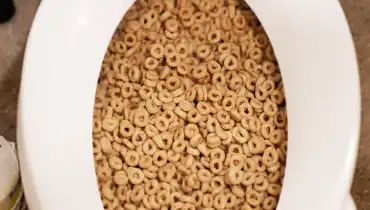We have unearthed this article involving Flushing Food Down the Toilet? directly below on the net and decided it made good sense to talk about it with you on my blog.

Intro
Many people are commonly confronted with the issue of what to do with food waste, particularly when it involves leftovers or scraps. One typical question that arises is whether it's alright to purge food down the toilet. In this article, we'll delve into the reasons that people could take into consideration flushing food, the effects of doing so, and alternate methods for appropriate disposal.
Reasons why people may take into consideration purging food
Absence of understanding
Some individuals may not recognize the potential harm triggered by flushing food down the bathroom. They may wrongly believe that it's a harmless method.
Ease
Flushing food down the toilet might feel like a fast and simple service to dealing with unwanted scraps, specifically when there's no neighboring garbage can offered.
Laziness
In many cases, people might merely choose to flush food out of large laziness, without taking into consideration the repercussions of their actions.
Effects of flushing food down the toilet
Environmental influence
Food waste that winds up in waterways can add to pollution and harm water ecosystems. In addition, the water used to flush food can stress water resources.
Plumbing problems
Flushing food can result in clogged up pipelines and drains pipes, triggering expensive plumbing repairs and aggravations.
Sorts of food that need to not be flushed
Coarse foods
Foods with fibrous appearances such as celery or corn husks can get tangled in pipelines and trigger clogs.
Starchy foods
Starchy foods like pasta and rice can soak up water and swell, bring about obstructions in pipelines.
Oils and fats
Greasy foods like bacon or cooking oils need to never be flushed down the toilet as they can solidify and create clogs.
Proper disposal techniques for food waste
Making use of a garbage disposal
For homes outfitted with waste disposal unit, food scraps can be ground up and flushed through the plumbing system. However, not all foods appropriate for disposal in this way.
Recycling
Specific food product packaging products can be recycled, minimizing waste and reducing environmental impact.
Composting
Composting is an environmentally friendly means to throw away food waste. Organic products can be composted and made use of to improve soil for horticulture.
The significance of appropriate waste management
Reducing environmental harm
Correct waste administration techniques, such as composting and recycling, assistance minimize air pollution and maintain natural deposits for future generations.
Safeguarding pipes systems
By preventing the technique of flushing food down the toilet, property owners can prevent expensive plumbing repair work and keep the honesty of their pipes systems.
Verdict
In conclusion, while it may be tempting to flush food down the bathroom for ease, it is essential to comprehend the possible effects of this action. By taking on correct waste monitoring techniques and throwing away food waste sensibly, individuals can contribute to much healthier plumbing systems and a cleaner setting for all.
FLUSH FOOD DOWN THE TOILET?
FLUSHING FOOD CAN CAUSE BLOCKED DRAINS IN YOUR HOME
All of the plumbing fixtures in your home are connected to the same sewer pipe outside of your home. This outdoor sewer pipe is responsible for transporting all the wastewater from your home to the Council sewer mains. Even small pieces of food that go down the kitchen sink can cause problems for your sewer. It should therefore be obvious that flushing larger bits of food, such as meat, risks a clog in either the toilet itself or the sewer pipes. Flushing greasy food is even more problematic because oil coagulates when it cools, coating the interior lining of your pipes.
THE TOILET IS NOT A BIN
Food isn’t the only thing that people shouldn’t be flushing down the toilet. People use the toilet to dispose of all kinds of things such as tampons, makeup wipes, dental floss, kitty litter and even underwear. Water goes to great lengths to educate residents about the high costs and stress placed on wastewater treatment systems simply from people flushing the wrong stuff down the toilet. It costs taxpayers millions of dollars each year, and homeowners thousands in blocked drain repairs.
FLUSHING FOOD IS A WASTE OF WATER
Flushing food is a waste of our most precious resource - water. In June this year Level 1 water restrictions were introduced to protect water supply from drought conditions. Much of New South Wales continues to be affected by prolonged drought with recent figures revealing up to 97 per cent of the state remains in drought. Depending on whether you have a single or dual flush toilet, every single flush uses between five and 11 litres of water. In the current climate this is a huge amount of water to be wasting on flushing food that should be placed in the bin (or better yet, the compost).
https://www.jabplumbingsolutions.com.au/blog/can-you-flush-food-down-the-toilet

I discovered that piece on Flushing Food Down the Toilet? when exploring the search engines. Those who appreciated our post kindly be sure to share it. Thanks a lot for taking the time to read it.
Call Today